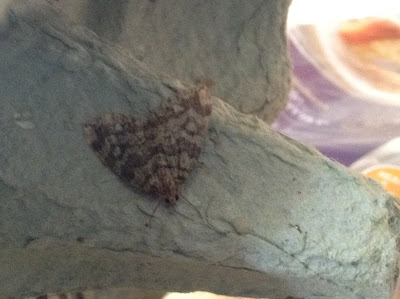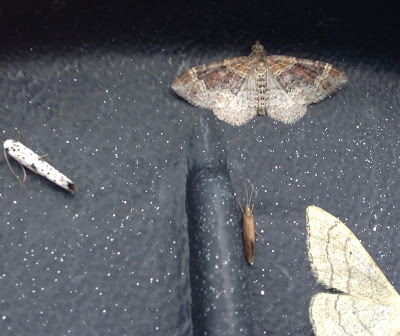It's much too early to be thinking of Autumn, especially as the heat of this exceptional Summer is apparently due to return after the current, very welcome hiatus of fresher weather and some soft, refreshing rain.
That said, the lovely Thorn moth in my first picture does have colours evocative of the season of mists and mellow fruitfulness etc. More to the entomological point, which Thorn is it? There are so many on the go, but because of its resting position and violet band, I am going to opt for Purple Thorn.
Next, I was struck by the difference between the two Shuttle-shaped Darts at the top of the composite picture above. The lighter one is the male, the darker the female. Below them are a couple of Prominents who always have a family representative in the trap at the moment; Iron to the left, Pebble to the right.
My second composite shows a couple of Willow Beauties, lovely delicate 'old lady' moths, the first accompanied by a nice, fresh Flame Carpet. On the bottom row is another irresistible Black Arches and - I think - a Common or Lesser Common Rustic with colouring rather similar to the rusty appearance of the Iron Prominent.
So to the continuing presence of hawk moths with the Poplar, top right, alongside a Common Plume - plume moths are very frequent visitors at the moment - a rather light Dark Arches and a Marbled Coronet, lovely moth. Plus a pretty pair below: another Willow Beauty on the transparent(ish) cowl beside a Lime-speck Pug.
Lastly, my granddaughter is currently into using dead ladybirds on her ever more interesting drawings and paintings of various members of the family. The trap is getting plenty at the moment, mostly the American sort whose invasion of the UK seems to be going all too well.





















































